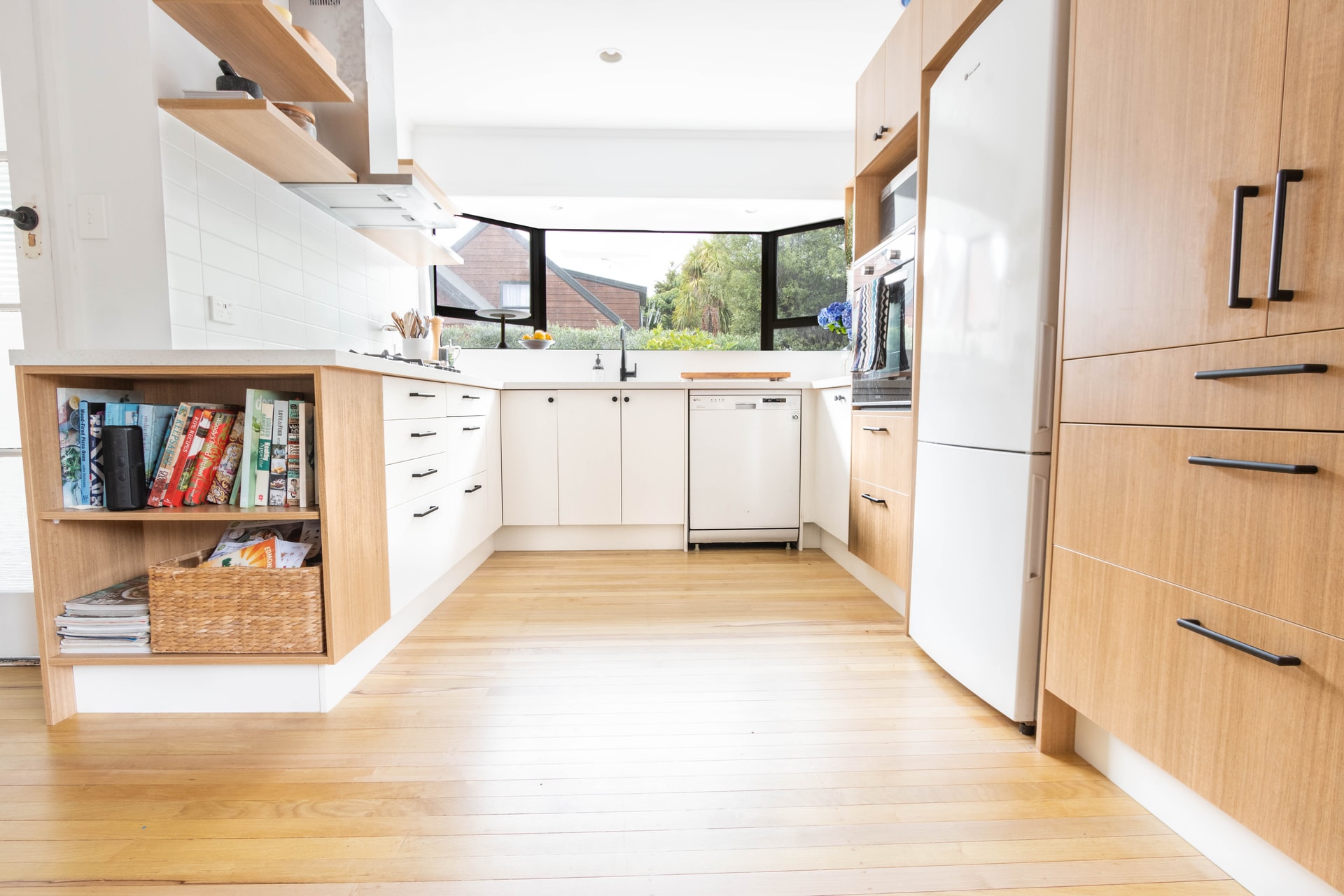Where to Start with Wood Flooring
Wood flooring is a highly versatile flooring that can work with virtually every interior style. But not all wood floorings are the same. The type, finish and species all play a critical role in not only the look, but how it will maintain over time.
Solid vs. Engineered
Solid wood floorboards are solid planks of hardwood. They’re common in older houses and can be sanded and restained many times. A drawback of hardwood is they may warp in humid environments. Engineered floorboards are made up of layers of wood veneer. These boards of tiny sheets of wood are more durable than solid wood and don’t warp. However, since these boards are made of thin layers, they usually cannot be refinished. These are a more permanent color decision while solid wood can be altered afterwards.
Finish vs. Unfinished
Floorboards can come in one of two ways, pre-finished or unfinished. A pre-finished floorboard will come with the stain already on them before installation. You won’t need to sand or stain them which will cut down on labor and time. They tend to be more expensive for this specific reason. An unfinished floorboard is sanded and stained on-site. You’ll have more control over the color and finish, while also cutting down on the price. However, they will require more labor and process for installation.
Species
Hardwood floors come in dozens of options, both new and reclaimed or salvaged from other building projects. Here’s a list of some of the most popular kinds.
- Oak. One of the most common floor types. Favored for its durability, wide grain and ability to stain in main different ways.
- Maple. A distinct grain pattern, finer than many other woods. These floors are more susceptible to rot from insects compared to other wood types.
- Cherry. An extremely durable wood, with a reddish hue and shiny texture.
- Bamboo. A lighter finish compared to other woods. Due to it being a woody grass, it’s more fragile than other hardwoods. Bamboo is a renewable resource.
- Pine. A wide variety in species due to the countless types of pines. It’s best to advise with an expert before selecting a specific type.
Source: House Beautiful

